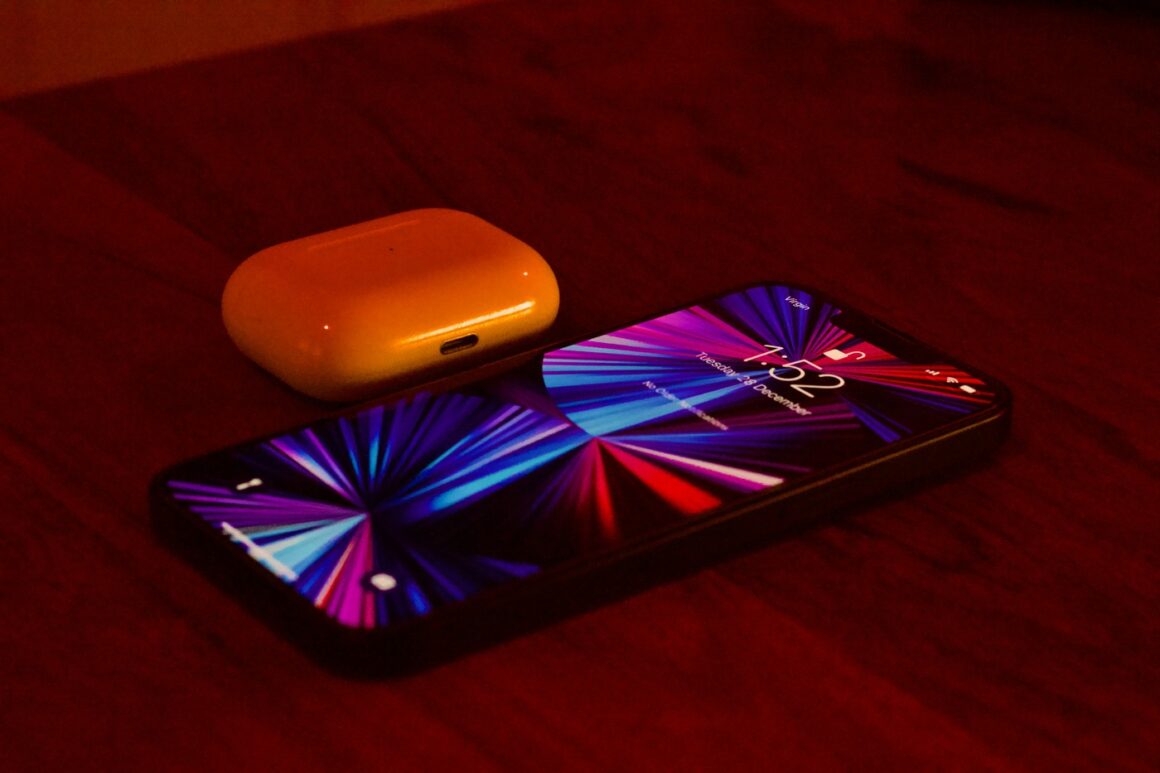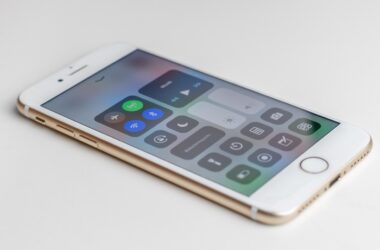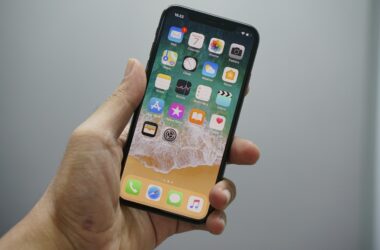Introduction
In an era where our smartphones are central to daily life, security isn’t just a preference; it’s a necessity. The iPhone, renowned for its advanced features and perceived security, is not immune to the threats lurking in the digital world. Contrary to popular belief, iPhones can be vulnerable to a variety of hacks and security breaches, making it crucial for users to understand and implement measures to protect their personal information. This blog post serves as your ultimate guide to navigating the complexities of iPhone security. From identifying common vulnerabilities to taking proactive steps toward safeguarding your device, we’ll cover everything you need to know to keep your iPhone and your data secure.
1. Understanding iPhone Security Vulnerabilities
While Apple’s iOS is lauded for its security features, no system is impervious to attacks. Understanding the potential vulnerabilities can help iPhone users stay one step ahead of hackers.
1.1 Phishing Attacks:
One of the most prevalent threats to iPhone users is phishing. These attacks often come in the form of deceptive emails or messages, tricking users into revealing personal information. Phishing attempts can bypass technological defenses, making user vigilance and awareness key to prevention.
1.2 Unsecured Wi-Fi Connections:
Connecting to public Wi-Fi networks can expose your iPhone to interception. Hackers can easily exploit these connections to access your personal data or inject malware into your device.
1.3 Malware and Spyware:
Though rare on iOS due to Apple’s strict app review process, malware and spyware can still find their way onto iPhones, especially through malicious websites or unverified app installations.
By staying informed about these and other potential security threats, iPhone users can better protect themselves from becoming victims of cyber attacks.
2. Common Hacks and Exploits Targeting iPhones
Despite its robust security measures, the iPhone is not immune to hacking attempts and exploits. Understanding these common threats can empower users to better safeguard their devices.
2.1 Jailbreaks:
Jailbreaking is the process of removing software restrictions imposed by iOS. While it allows users to customize their devices and install unauthorized apps, it also significantly compromises the iPhone’s security, making it susceptible to malware and other vulnerabilities.
2.2 Malicious Apps:
Occasionally, malicious apps manage to bypass Apple’s strict app review process. These apps can exploit system vulnerabilities to steal data, monitor user activity, or install additional malware without the user’s consent.
2.3 Exploit Kits:
Exploit kits are tools used by hackers to take advantage of vulnerabilities in software. For iPhones, these kits can target outdated versions of iOS or specific apps to gain unauthorized access to the device.
2.4 Significance of Awareness:
Awareness of these exploits is crucial. Users should be cautious about jailbreaking their devices, regularly update their iOS, and download apps only from trusted sources to minimize risks.
3. Key Features of iPhone Security
Apple incorporates several advanced security features into the iPhone to protect users’ data and privacy. Understanding and utilizing these features can greatly enhance your device’s security.
3.1 Face ID and Touch ID:
These biometric systems provide secure and convenient ways to unlock your iPhone, authenticate payments, and approve app downloads, ensuring that only you can access your device.
3.2 Find My iPhone:
This feature helps locate a lost or stolen iPhone and allows users to lock it remotely, display a message, or erase its data to prevent unauthorized access.
3.3 End-to-End Encrypted Messaging:
iMessage and FaceTime use end-to-end encryption, meaning only the sender and receiver can access the content of the messages, making it virtually impossible for someone to intercept and read your conversations.
3.4 Regular iOS Updates:
Apple frequently releases iOS updates to address security vulnerabilities. Keeping your iPhone updated ensures you have the latest security patches, protecting you from known exploits.
These features, when used effectively, form a comprehensive security framework that protects iPhone users from most threats. However, it’s also crucial to adopt safe practices and remain vigilant to potential security risks.
4. Steps to Enhance iPhone Security
Securing your iPhone involves more than just utilizing its built-in features. By adopting a proactive approach to security, you can significantly reduce the risk of hacks and protect your personal information. Here are some essential steps every iPhone user should take:
1. Use Strong Passwords and Biometric Security:
- Create a strong, unique passcode for your iPhone that goes beyond the simple 4-digit code. Consider using a longer alphanumeric code.
- Leverage Face ID or Touch ID for additional security layers, making unauthorized access to your device much more difficult.
2. Enable Two-Factor Authentication (2FA) for Apple ID:
- Two-factor authentication adds an extra layer of security by requiring a second form of verification in addition to your password. This can significantly reduce the risk of unauthorized access to your iCloud and other Apple services.
3. Regularly Update iOS:
- Always install the latest iOS updates. These updates not only introduce new features but also contain critical security patches to protect your iPhone from known vulnerabilities.
4. Download Apps from Trusted Sources Only:
- Only download apps from the App Store, which Apple rigorously vets for security. Be wary of apps from unknown sources or those prompted from websites, as they may contain malware.
5. Backup Your iPhone Data Securely:
- Regularly back up your iPhone to iCloud or your computer. This ensures that your personal data is preserved and can be restored in case of data loss or if you need to reset your device.
6. Use a VPN on Public Wi-Fi Networks:
- Public Wi-Fi networks can be insecure. Using a VPN (Virtual Private Network) encrypts your internet connection, protecting your data from interceptors on the same network.
By following these steps, you can significantly enhance the security of your iPhone and safeguard your personal information against potential threats.
5. Dealing with a Compromised iPhone
If you suspect your iPhone has been hacked or compromised, taking swift action can help mitigate potential damage. Here’s what you should do:
1. Change Your Passwords:
- Immediately change the passwords for your Apple ID and any other sensitive accounts accessed through your iPhone.
2. Update iOS and Apps:
- Ensure your iPhone’s operating system and all apps are up to date, as updates may contain fixes for the security vulnerability that was exploited.
3. Restore from a Recent Backup:
- If you have a recent backup that predates the compromise, consider restoring your iPhone from that backup. This can remove any malicious software that may have been installed on your device.
4. Factory Reset:
- As a last resort, performing a factory reset will erase all data and settings from your iPhone, removing any malicious content. Before doing this, ensure you have a backup of your important data.
5. Contact Apple Support:
- If you’re unsure about the steps to take or need further assistance, contacting Apple Support can provide you with professional advice and help secure your device.
Taking these steps can help you regain control of your iPhone and protect your personal information from further unauthorized access.
6. Future of iPhone Security
As digital threats evolve, so too does the technology designed to combat them. Apple continuously works on enhancing iPhone security, not only through hardware advancements but also by refining iOS to address emerging vulnerabilities. Here are some anticipated trends and advancements in iPhone security:
6.1 Enhanced Biometric Authentication:
- Future iPhones may incorporate more advanced biometric authentication methods, such as improved facial recognition or even iris scanning, to offer even more secure and convenient ways to unlock devices and authenticate transactions.
6.2 AI and Machine Learning for Security:
- Artificial intelligence (AI) and machine learning (ML) could play significant roles in detecting and neutralizing threats before they can affect users. By analyzing patterns of behavior, these technologies can help identify and block malicious activities and security breaches.
6.3 More Robust Encryption Methods:
- As cyber threats become more sophisticated, expect to see stronger encryption technologies being implemented to protect data both at rest and in transit. This would make unauthorized access to data even more difficult for attackers.
6.4 Decentralized Security Approaches:
- With the increasing focus on privacy and data protection, there may be a shift towards decentralized security models that give users more control over their data. This could include blockchain-based solutions for secure, transparent transactions and data exchanges.
The landscape of mobile security is constantly changing, and Apple’s commitment to user security suggests that the iPhone will continue to be at the forefront of implementing innovative security features.
Conclusion
In the digital age, security is a paramount concern, especially for iPhone users who store a significant amount of personal and sensitive data on their devices. While Apple’s iOS offers robust security features, understanding and actively engaging with these protections is essential for users. By staying informed about potential vulnerabilities, adopting secure practices, and utilizing the built-in security features of iPhones, users can significantly mitigate the risk of hacks and protect their personal information.
This guide has covered the essentials of iPhone security, from understanding common threats to taking proactive steps to enhance security, and even dealing with the aftermath of a security breach. Remember, security is not a one-time effort but an ongoing process. By remaining vigilant and proactive, iPhone users can enjoy the benefits of their devices with peace of mind, knowing their data is secure.
As we look towards the future, it’s clear that iPhone security will continue to evolve, introducing new features and technologies designed to safeguard users against ever-evolving threats. Embracing these changes and staying informed will be key to maintaining the security of your device and your personal information.








